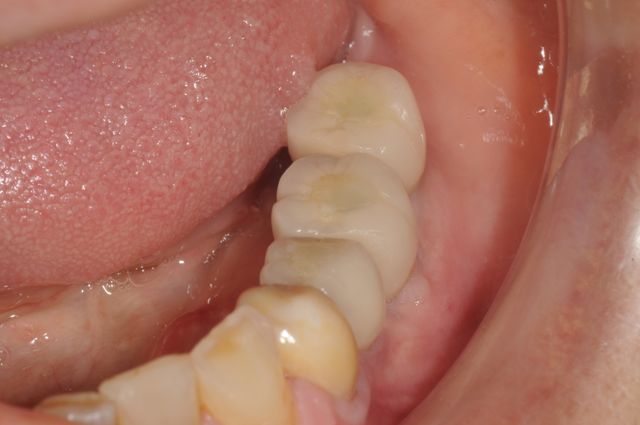
Dental Implants for Front Teeth
Loss of a front tooth, whether due to an accident or decay, can be a very traumatic experience for a person. A dental implant is a great treatment option for replacement. However the front teeth and the surrounding smile zone present unique challenges that make therapy in this area among the most difficult to do. It requires the most expertise in both diagnostic and technical protocols. There are the 5 key principles every patient should know about how to achieve great results with dental implants in the smile zone.
Central Incisors
Missing central incisors are best replaced with dental implants and restored with customized crowns. If both incisors are missing, then each should be replaced with a single dental implant.
Lateral Incisors
Lateral incisors have smaller dimension than central incisors and often there is minimal space for implant placement. Hence, it is critical to have an accurate measurement to determine between regular or narrow size implants.
Number of Needed Implants
If you have multiple missing adjacent teeth in the upper or lower front area of your mouth, implants are often placed in staggering position to allow better development of gum tissue architecture.
Dental Implants for Back Teeth
The molars and premolars make up the back or posterior teeth of the mouth and they are responsible for grinding and processing food during chewing. They support the major forces of biting and chewing.
Why Replace the Back Teeth?
- Maintain proper bite and teeth for chewing
- Prevent shifting of adjacent and opposing teeth
- Prevent excessive forces to the front teeth that can cause them to develop fractures or periodontal disease
- Aesthetics
Number of Implants for Replacing Back Teeth:
The best treatment approach is to replace each missing tooth with an implant. If multiple teeth are missing adjacent to each other, it is best place one implant per missing tooth for support of a single crown. Bridges (several teeth supported by fewer implants) are not routinely recommended.
Key to Implant Success in the Back Teeth:
- One implant per missing tooth.
- Use widest and tallest implant as possible.
- Immediate restorations to be done with great caution. It is best to allow them to integrate and heal before restorations.
- Avoid short implants.
- Avoid bridges (for example, placing two implants for support of four adjacent missing teeth)
- Proper restorations with excellent fit and bite harmony (proper occlusion)

Considerations for back upper teeth
The location of the maxillary sinus and dimension of available bone must be carefully assessed using a CBCT (cone beam CT scan) to allow selection of correct implant size. The upper jaw bone is weaker and less dense relative to the lower jaw bone, hence longer healing time for integration may be necessary. Immediate restorations (loading) should also be done with caution. If there is inadequate height of bone due to sinus position, a sinus lift bone grafting technique is indicated.
Considerations for back lower teeth
The lower jaw contains a large sensory nerve (mandibular nerve) and variations in anatomy which has anatomical importance for placement of dental implants. A CBCT (cone beam CT scan) is mandatory for locating the nerve and any other bone anatomical features that will influence size and position of the implant. A 3-D planning helps to accurately predict the position of the implant for a safe and precise outcome.
Treatment Stages
Treatment stages and time can vary between various individuals and implant sites. Following your examination, Dr. Kazemi and your restorative dentist will present a detailed treatment plan with appropriate stages and timelines. Some modifications may be necessary during the treatment.
Treatment Options and Design
Treatment options and designs for your new teeth are customized specifically based on your needs, goals, existing dental condition, and the best long-term prognosis. This requires evaluation by a surgeon and your restorative dentist and close collaboration to design a customized treatment plan.
Staged (Delayed) Placement
In staged or delayed treatment option, the implant is placed 2-3 months after the tooth is extracted. This allows adequate bone healing for improved implant support. If the extraction site was grafted, then the implant is placed in five to six months.
Immediate Placement
With immediate approach, the tooth is extracted and the implant is immediately placed in the site. some minor grafting is often necessary to preserve the bone and gum tissue architecture. The implant is allowed to heal for 3-6 months depending on the circumstances before it is restored.
Tooth-in-a-Day
Tooth-in-a-day refers to extraction of a tooth with immediate placement of dental implant and temporary restoration. This way, patient has a fixed temporary tooth supported by the implant. The final tooth is then placed in 3-6 months depending on the circumstances.